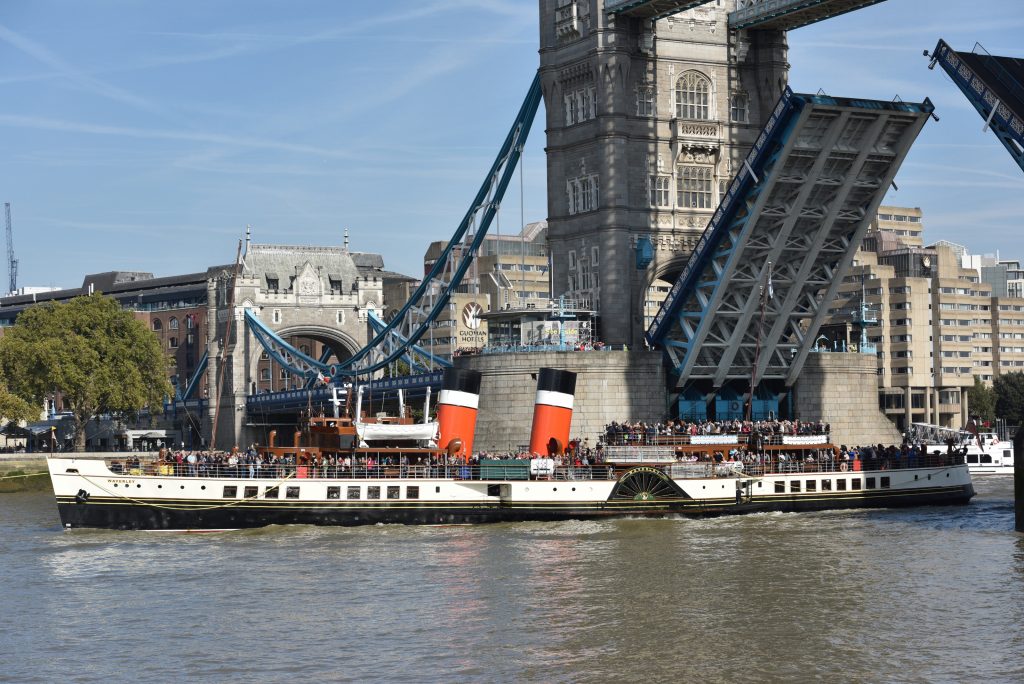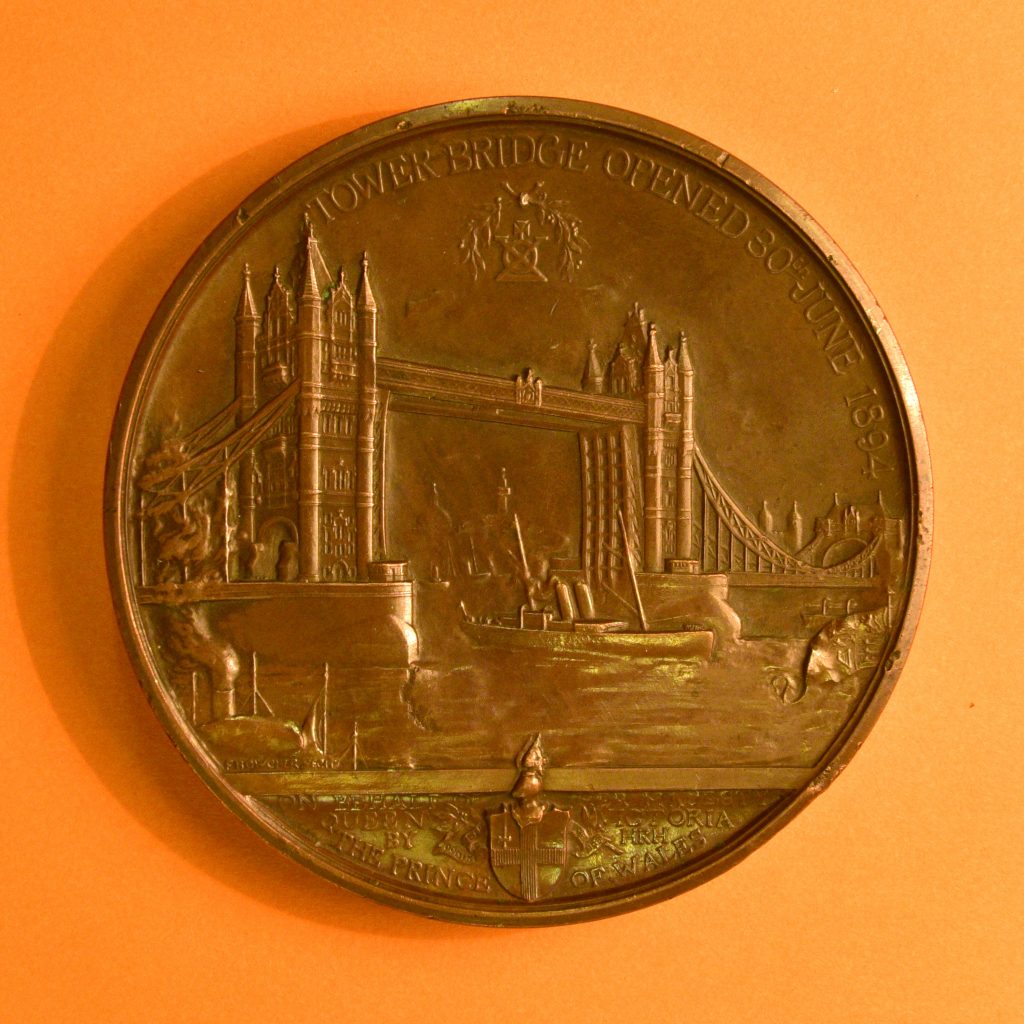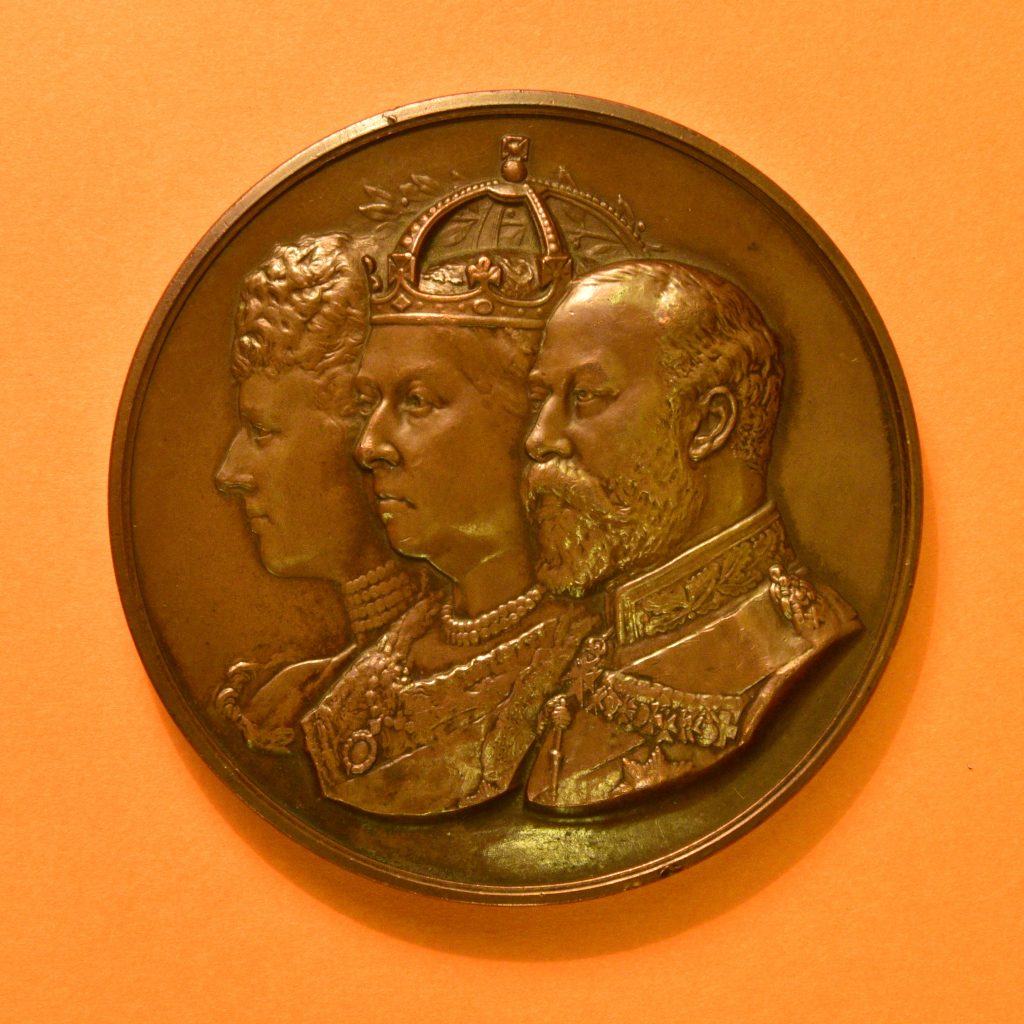Contracting, project management and construction
The method of contracting
The Corporation of London was accustomed to contracting for major infrastructure projects. The work would be broken down into the minimum number of separate contracts and, for each, a detailed contract document would be prepared, containing a specification of works, a bill of quantities and a schedule of prices to be completed by the tenderer for the pricing of each element of the work. One set of contract drawings would accompany each contract.
For each contract, advertisements would be placed in the press inviting interested parties to tender. Tenders would be opened at a meeting of the Bridge House Estates Committee and the successful tenderer selected.
This was the method adopted for Tower Bridge and it was probably the only method possible, no one company being capable of undertaking the wide range of specialised work required to build the bridge on a turnkey basis.
Having said that, no evidence of newspaper advertisements for Contract No. 5 has been found. This points clearly to Contract No. 5 being awarded on a single tender basis to Sir W G Armstrong, Mitchell & Co. Ltd. There really was only one company in the UK with the skill and experience to design and build the hydraulic machinery for the bridge. This contract was let in December 1887, before the design work on the hydraulics of the bridge had been undertaken.
The individual contracts
The work was broken down into the following contracts, the table showing the name of the successful tenderer in each case:
| Contract No. | Scope | Contractor | Date of Contract | Contract Value |
| 1 | Piers and abutments | John Jackson | April, 1886 | £131,344[1] |
| 2 | Northern approach, including north anchorage girders | John Jackson | March, 1887 | £52,882 |
| 3 | Cast iron parapet for Northern approach | John Jackson | December, 1887 | £5,596 |
| 4 | Southern approach, including south anchorage girders | William Webster | July, 1888 | £38,383 |
| 5 | Hydraulic machinery | Sir W G Armstrong, Mitchell & Co. Ltd. | December, 1887 | £85,232 |
| 6 | Iron and steel superstructure | Sir William Arrol & Co. Ltd. | May, 1889 | £337,113 |
| 7 | Masonry superstructure | Messrs. Perry & Co, (Herbert Henry Bartlett) | May, 1889 | £149,122 |
| 8 | Paving and lighting | Messrs. Perry & Co, | May, 1889 | £30,333 |
| £830,005 |
John Wolfe Barry’s estimate of £750,000 for the bridge included a sum of £165,000 for land purchase, so the £830,005 building cost represents an increase above the estimated building cost of 42%.
The contracts followed a logical sequence. The piers and abutments had to be largely in place before the contract could be let for the masonry above about 4 feet above Trinity high water. The contract for the hydraulic machinery of the bridge had to be let some six months before the contract for the southern approach, as the basic layout and design of the engine room accommodation had to be determined before contract drawings for Contract No. 4 could be completed. Contracts 6 and 7 had to start together as these contractors would need to work closely together to complete the masonry of the piers to carry the steel girders supporting the roadway over the bascule chambers and the granite slabs and holding-down bolts to secure the steel columns.
The contracts made explicit provision for this concurrency. However, it cannot have been easy for Arrol’s and Bartlett’s men to erect the steelwork of the main towers and the masonry “cladding” of the towers at the same time.
The tendering process
As an illustration of the tendering process, the Notice for Contract no. 1 reads as follows:
TOWER BRIDGE. – CONTRACT No. 1.
Notice is hereby given, that the Bridge House Estates Committee of the Corporation of London will meet at Guildhall on Monday, the 29th day of March next to receive TENDERS for the CONSTRUCTION of the LOWER PORTIONS of the ABUTMENTS and TWO PIERS of the proposed TOWER BRIDGE.
The Specification of the Works, Form of Contract, Form of Tender, Bill of Quantities, together with the Contract Drawings, may, from and after the 15th March next, be seen at the Architect’s Office, Guildhall, E.C., and at the office of John Wolfe Barry, Esq., No. 23, Delahay-street, Westminster, and copies of all the above documents may be there obtained on payment of five guineas, which will be returned to all unsuccessful competitors who send in a bona fide Tender and return all the documents.
The Tenders must be on the printed Form of Tender, which must not be detached from the Specification and Quantities, and they must be sealed up, addressed to the Comptroller of the Bridge House Estates, Guildhall, London, E.C., endorsed “Tender for the Tower Bridge – Contract No. 1,” and be left at his office before Twelve at noon, on Monday, the 29th March, and the parties tendering will be expected to be in attendance at Guildhall on that day, at One o’clock precisely.
The Committee do not bind themselves to accept the lowest or any Tender that may be sent in.
JOHN A. BRAND, Comptroller of the Bridge House Estates.
So, bidders had just two weeks to prepare their tenders for this very large fixed-price contract, which featured a liquidated damages clause and extremely tight timescales. They were not asked for a written proposal, setting out their understanding of the requirements, their approach to the work, a detailed project plan and work breakdown structure, curricula vitae of the people who would manage the project, the company’s previous experience of work of this type, method statements and a risk register. All the Corporation required was a completed schedule of prices.
The committee would meet on the day the tenders were delivered, with the clear expectation that a supplier would be selected on that day, with contract signature following just a few days later.
The contract sets out clearly the anticipated timescale. Work had to begin within one week of award of contract. One pier and its adjoining abutment had to be delivered within 15 months of contract start, with the other pier and its abutment being delivered no later than 22 months from contract start. These timescales are extremely aggressive for work of this difficulty and structures of this magnitude. The contract was signed on 13 April, 1886.
Completion of Contract No. 1 was in January 1890, which means that this part of the Tower Bridge project took almost exactly twice as long as planned. On 28 March 1893, George Cruttwell presented a paper on the foundations and piers of the Tower Bridge at the Institution of Civil Engineers. In the ensuing discussions, John Wolfe Barry expressed his view that John Jackson’s price had been rather too low. He also mentioned that John Jackson had confided in him that he only made a small profit on the job.
Other contracts also specified demanding timescales. For example, Sir William Arrol was required to complete the superstructure within 24 months from receipt of order, while having his hands expertly tied by the following wording in his contract:
“It is expected with regard to Contracts Nos. 1 and 2 that the Northern Abutment and the Northern Pier will be ready to be delivered to the Contractor at or about August next; the Northern Approach will be sufficiently advanced by about June next, and the Southern Pier by about December next. With regards to Contract No. 4, the Southern Abutment will be ready to be handed over to the Contractor by January, 1890, and the Southern Approach by March 1890. In giving these dates it is to be expressly understood that the Corporation does not bind itself to the accuracy thereof, and that no inaccuracy shall relieve the Contractor from his obligations under the Contract, or give him any right to compensation.”
Project management
John Wolfe Barry could not be on site at all times. He appointed Mr George Edward Wilson Cruttwell, who had joined his practice in 1879, to act as resident/site engineer throughout the period taken to build the bridge.
Tower Bridge contracts required the contractors to provide fortnightly returns. For example, on Contract No. 1, John Jackson was required to report the number of men employed by type and the number of horses working at the site.
The ledgers reveal that all contractors received regular payments on account, the sums often being in round figures. At the end of every month, each contractor was required to review the work done during the month with the Engineer or, more likely, with resident engineer George Cruttwell, to ascertain by actual measurement the quantity of work completed. The Engineer would then issue a certificate, permitting the Corporation to pay the contractor for 90% of the value of work done. The 10% retention on total contract value was not released until contract completion was signed off by the Engineer.
Project plans maintained by contractors would, in all probability, have been hand-written. Barry’s team maintained a detailed record of progress. A wonderful survivor is a progress record on which the completion date of each principal component of the bridge was noted. It is a lovely thing, at least 2 metres long and covering the entire length of both approaches. It is part detailed drawing and part water colour. It looks very much like the work of George Stevenson.
Construction of the piers
There is an extremely detailed account of the method of constructing the piers in the paper George Cruttwell presented to the Institution of Civil Engineers on 28 March, 1893 (Paper No. 2652).
Construction of the superstructure
Londoners were enthralled by the sight of the steel skeleton of the bridge taking shape. (My book contains several photographs taken during construction.) The bascules, which were constructed in the fully-open position, were lowered for the first time on 27 March, 1894, just three months before the opening ceremony.
Bronze medal by F Bowcher commemorating the opening of Tower Bridge on 30 June, 1894
Actual timescale and cost
The bridge took eight years to construct, twice the originally planned timescale. With hindsight, the original expectation must be seen as overly ambitious.
With regard to cost, a paper presented to the Institution of Civil Engineers on 10 November 1896 by George Cruttwell states that the total cost was £902,500, excluding the cost of the land. Modern sources state the total cost as £1,184,000. The ledgers reveal a slightly different story. From 14 August 1885 (the date of the Tower Bridge Act) to 31 December 1898 the total expenditure was £1,642,714-1s-5d. The reason for including the years ending 31 December 1895 – 1898 is that substantial capital expenditure was still being incurred on the bridge, including a payment of £30,000 to Perry & Co. in 1898 in settlement of a claim.
This expenditure does include the purchase of land and buildings to enable the construction, the cost of compensation to warfingers and others for deleterious impact on their businesses, plus legal costs and all ancillary costs associated with the project. The total cost of the project at 2018 prices is approximately £200 million. This only takes into account the change in the value of the pound, not the increase in labour rates since the 1890s. The Day-work Rates set out in Contract No. 6 make for interesting reading.
| Hourly Day-work Rates, Contract No. 6 | £ | s. | d. |
| Cart, horse and driver | 0 | 1 | 4 |
| Cart, two horses and driver | 0 | 2 | 0 |
| Boy | 0 | 0 | 4 |
| Ordinary labourer | 0 | 0 | 7 |
| Excavator, pile-driver, timber-man, concrete-mixer, or watchman | 0 | 0 | 9 |
| Carpenter or joiner | 0 | 0 | 11 |
| Bricklayer | 0 | 1 | 0 |
| Mason | 0 | 1 | 0 |
| Smith | 0 | 0 | 11 |
| Fitter | 0 | 1 | 0 |
| Diver, signalman, two labourers to air-pump, and use of diving apparatus | 0 | 15 | 0 |
| Ganger | 0 | 1 | 2 |
| Foreman | 0 | 1 | 8 |
There was no minimum wage in the 1890s! A boy working a 60 hour week would be charged at one pound, the boy probably taking home considerably less to his Mum.
The grand opening
The grand opening of the new bridge took place on 30 June, 1894. The weather was splendid, with a wonderfully clear atmosphere and a sky of peerless blue. The event drew massive crowds. A mighty cheer and the boom of drums precisely at noon heralded the approach of the Royal Party to the thousands of seat-holders stationed in specially-constructed grandstands on both sides of the northern approach. The band of the Coldstream Guards was playing and, as soon as the procession was visible from the river, steamships, tugs and launches sounded their whistles, sirens and bells. The procession drove over the bridge to the Surrey side, turned around and returned to the Middlesex side where the royal party entered the profusely-decorated Royal Pavilion.
After a welcoming address by The Recorder, Sir Charles Hall, the Prince of Wales gave a short speech hailing the “splendid engineering skill bestowed upon the construction of the bridge”. The Prince then announced “I declare this bridge open for land traffic”.
The Prince then turned to a pedestal on which was a silver gilt loving cup. Removing the cover of the cup and applying it to a switch device, the Prince twisted the cover to send a signal to the Surrey engine driver, who lifted his bascule, the Middlesex driver following suit. The Prince’s announcement, “I declare this bridge open for river traffic” was drowned out by cheers from the crowds, a further sounding of whistles and sirens by river craft, a flourish of trumpets and a royal salute from the guns of The Tower. A flotilla of twelve decorated vessels passed through the bridge.
The first year of operation
The bridge was originally required to stay in the bascules raised position for two hours around the time of high tide. This was very unpopular with road users and pedestrians and the practice was soon discontinued. By the end of its first year of operation, the bridge was carrying one third of the traffic that had been seen on London Bridge prior to the opening. River traffic was similarly heavy, the bascules being raised 6,160 times.
Personnel
Some 82 staff were originally employed to operate the bridge. These included:
- the Tower Bridge Master, for whom a residence was provided in the Southern abutment tower,
- the Deputy Tower Bridge Master,
- the Tower Bridge Engineer,
- a superintendent of machinery,
- stokers and oilers to work in the plant rooms and the machinery rooms on the piers,
- watchmen, signalmen, gatemen and relief men to safely manage the lifting of the bridge when required,
- drivers to raise and lower the bascules,
- liftmen, painters, electricians, gas and water fitters, clerks and messengers.
Today, the bridge is operated by a staff of around 15 technicians. Many more than this are employed to run the bridge as a business and an attraction. Much of the maintenance work is outsourced to specialist contractors.

[1] The contract signed on 13 April, 1886 was for £121,344

